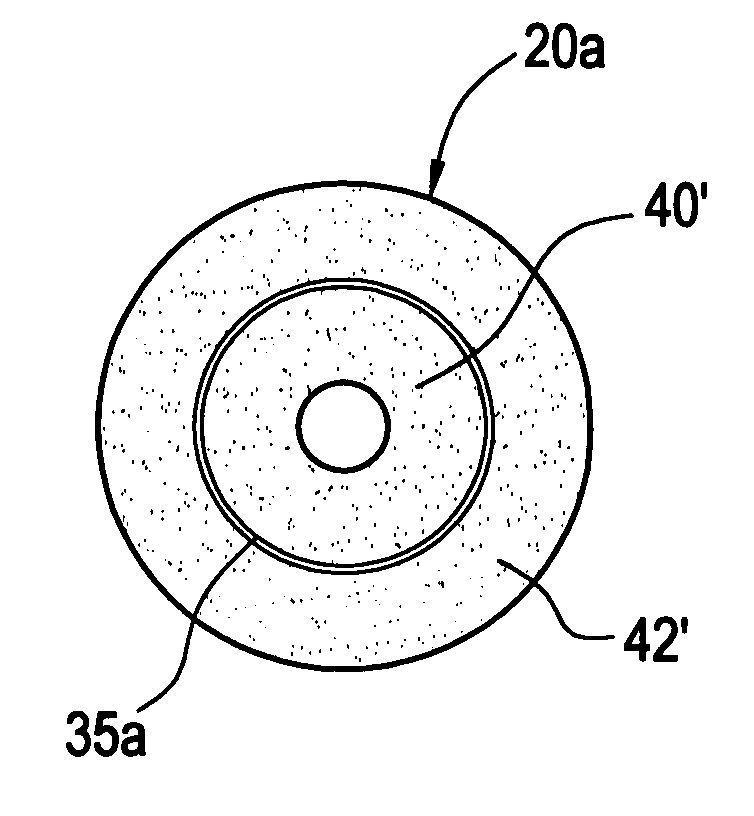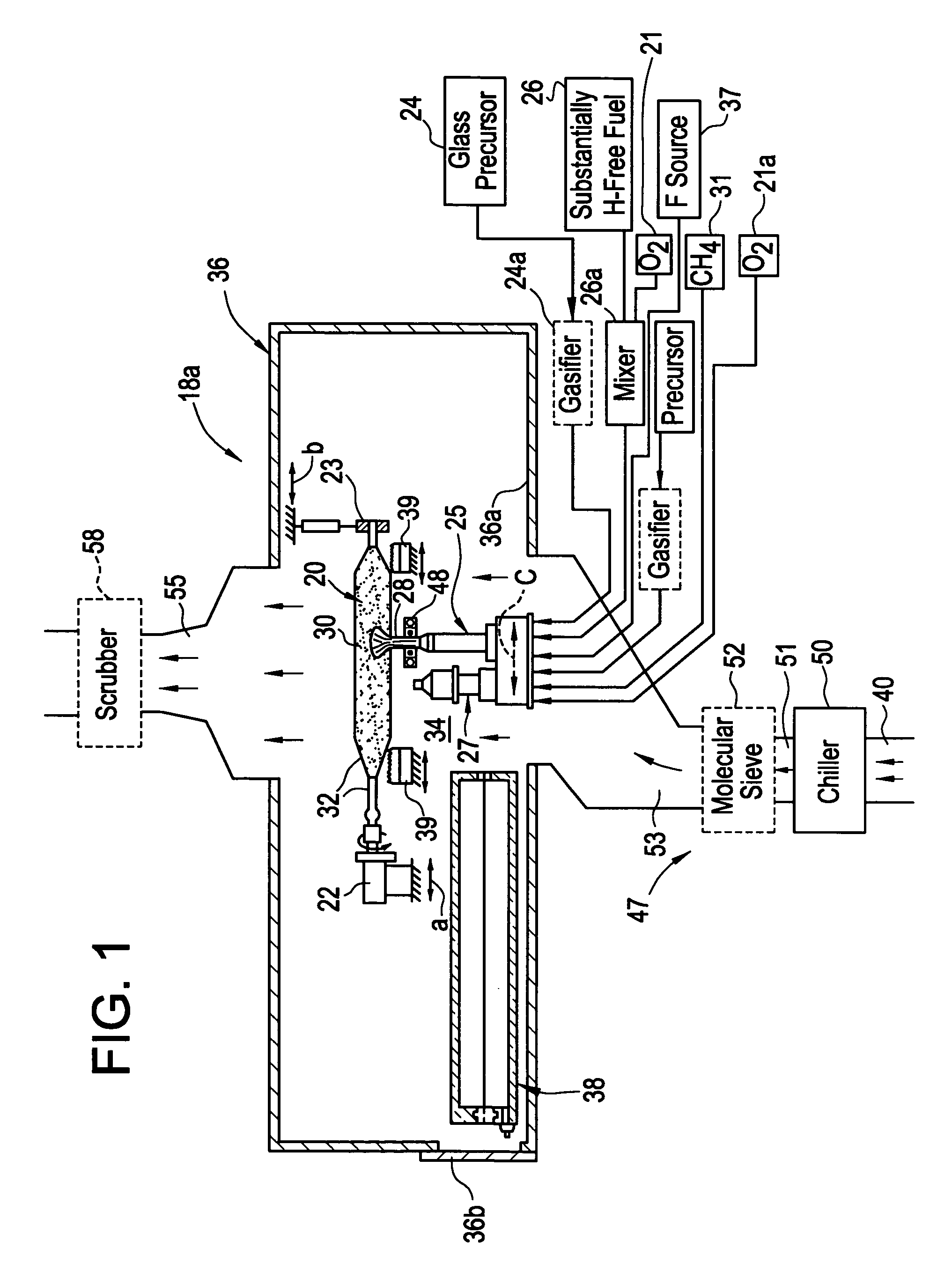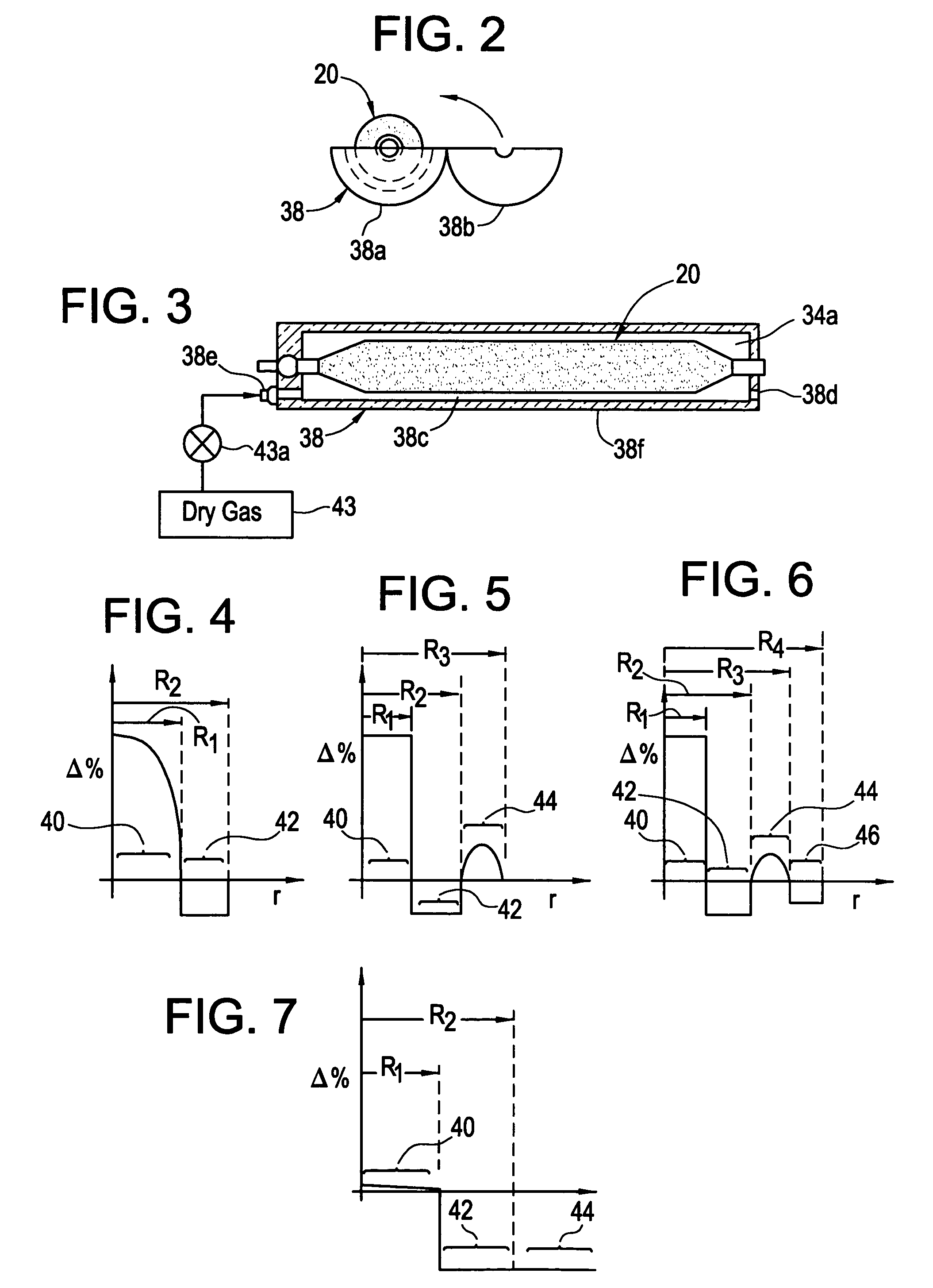Method of forming optical fiber preforms
a technology of optical fiber and preforms, which is applied in the direction of glass fibre products, indirect carbon-dioxide mitigation, domestic applications, etc., can solve the problem of one-half mole of combustion supporting oxygen required to combust, and achieve the effects of improving the burning rate, heat and structure of the flame, and increasing the burning speed of the substantially hydrogen-free fuel
- Summary
- Abstract
- Description
- Claims
- Application Information
AI Technical Summary
Benefits of technology
Problems solved by technology
Method used
Image
Examples
example i
Prior Art
[0119]In the OWG process, silica particles generated in flame are deposited on a colder target as amorphous or semi-sintered silica particles. The raw material for silica is OMCTS and the fuel used in natural gas. The blank thus formed is high in water-content. The blank is consolidated in the presence of fluorine to dry the fused silica glass formed. The blank after consolidation typically has a diameter of 4″ and has index of refraction striation that appears as annular rings. To make larger product, a piece of the blank has to be heated to softening temperature and allowed to flow out. This introduces another step to manufacturing and an opportunity to introduce contaminants in the glass.
[0120]The sensible heat released in the methane reaction of Prior Art Equation III is 802.4 kJ that under adiabatic conditions (no energy loss) will be used to heat up 3 moles of products formed. Prior Art Equation IV, the sensible heat released per mole of the product is 267.5 kJ.
example ii
[0121]The sensible heat released by the combustion of carbon monoxide to carbon dioxide, Equation I, is 283 kJ that under adiabatic conditions is used to heat one mole of product of combustion. The heat released from the combustion of one mole is CH4 is approximately three times that released from one mole of CO. The compensate for the lower heating value of CO, the flow rates of CO have to be at least three times higher to have similar heat release in the furnace. Because the heat released per unit mole of product of combustion during combustion of both methane and carbon monoxide are similar, the adiabatic flame temperatures for CO and CH4 are expected to be similar. The adiabatic flame temperature of CO in air is 1950° C. and that for methane is 1941° C. Adiabatic flame temperatures in oxygen are much higher as the thermal load due to the excess nitrogen in air is eliminated. The adiabatic flame temperature for CH4 in oxygen is 2643° C. The adiabatic flame temperature for CO in o...
example iii
[0122]The run conditions for the glass were as follows. This glass was made using a single liquid feed burner. The SiCl4 flow was between 5.5 and 7.5 g / min. Oxygen was used as an atomizing gas at 25 slpm. The CO gas stream was at 50 slpm. The distance at the start of the run from furnace crown to the sand was 9 inches and the crown temperature was maintained at about 1670° C.
[0123]As a result, this enables the manufacture of water-free fused silica glass by eliminating the use of any hydrogen containing reactants, both as raw material for silica and as fuel, the products of combustion have been made substantially water-free. Further, wet natural gas may be a source for sodium in addition to the water it carries. By eliminating the use of natural gas from the process, another possible source of contamination has been removed. The major hindrance to achieving high transmission at low wavelengths is iron contaminant. Fortunately, carbon monoxide combines readily with metals and in part...
PUM
| Property | Measurement | Unit |
|---|---|---|
| thickness | aaaaa | aaaaa |
| thickness | aaaaa | aaaaa |
| thickness | aaaaa | aaaaa |
Abstract
Description
Claims
Application Information
 Login to View More
Login to View More - R&D
- Intellectual Property
- Life Sciences
- Materials
- Tech Scout
- Unparalleled Data Quality
- Higher Quality Content
- 60% Fewer Hallucinations
Browse by: Latest US Patents, China's latest patents, Technical Efficacy Thesaurus, Application Domain, Technology Topic, Popular Technical Reports.
© 2025 PatSnap. All rights reserved.Legal|Privacy policy|Modern Slavery Act Transparency Statement|Sitemap|About US| Contact US: help@patsnap.com



